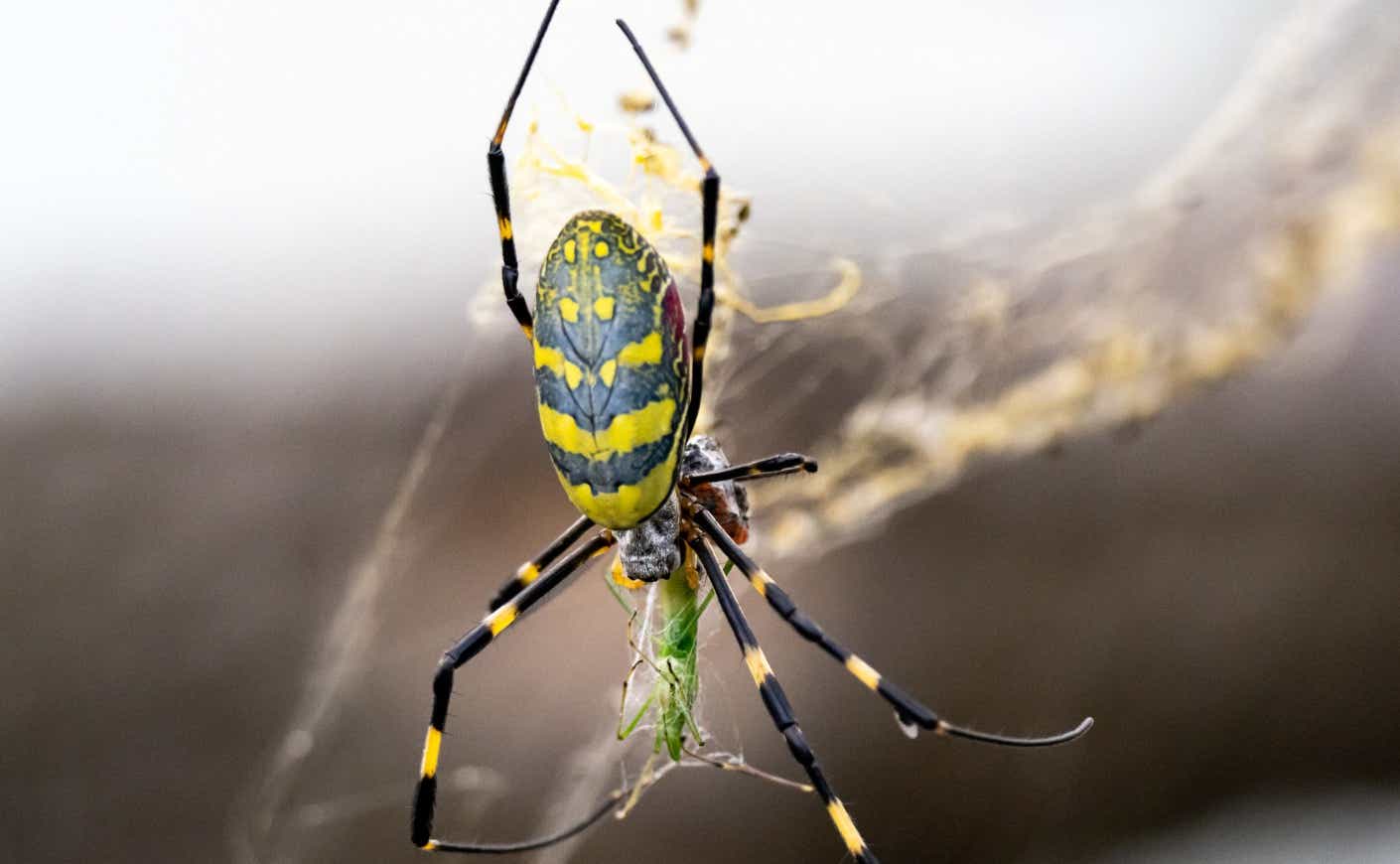A batch of unsettlingly large eight-legged visitors are making their way through the country.
According to a press release by New Jersey Pest Control earlier this year, Joro spiders are originally native to Japan, and likely made their way to America via some man-made activity, like through the inside of a shipping container or through personal travel. The state of Georgia has been ground zero for this spider spread; citizen-reported sightings started to spring up in 2021. People have reported seeing Joro spiders across much of the eastern U.S., including in Alabama, Mississippi, the Carolinas, Tennessee, Kentucky, Virginia, West Virginia, Maryland, and Ohio.
Now, experts feel certain it’s only a matter of time before the sprightly little arachnid is all over the eastern seaboard. In October 2023, invasive species expert David Coyle warned of this inevitable spread. “This spider is going to be able to inhabit most of the eastern U.S.,” he said, via USA Today. “Their comfort area in their native range matches up very well with much of North America… Barring some unforeseen circumstance, we expect the range of these things to continue expanding, likely to the north, and we’ve already seen that with some populations in Maryland.”
Here’s what you need to know about these large, wayfaring arachnids.
What is a Joro spider?
The species comes in yellow, blue, and red colors, and can grow to be the size of the palm of a human hand. The spider is venomous, and it gets its name from Jorōgumo, a ghostly creature from Japanese folklore that shape-shifts into a beautiful woman before killing its prey. (Unsettling, we know.)
Does the Joro spider fly?
Not in the traditional sense. The spiders travel from place to place using a method called “ballooning,” in which the thin silk thread of their webs acts as a parachute, sending fresh hatchlings to a new location. It’s a relatively quick way of getting around, so the creatures are expected to make their way to various parts of the U.S.
Where do the Joro spiders live, and where might they migrate to next?
In the United States, they’re largely concentrated in the southeast. They could spread quite far: Scientists from the University of Georgia have found that they’ll likely make their way up the East Coast in the near future. In Japan, which has a similar climate and roughly the same latitude as America, the critters live throughout the entire country.
“It looks like the Joros could probably survive throughout most of the Eastern Seaboard here, which is pretty sobering,” said Andy Davis, author of a study at the university’s Odum School of Ecology.
The Joro is related to the golden silk spider, which has remained contained to the Southeast because of its inability to withstand cold weather. But the University of Georgia’s team found that the Joro “has about double the metabolism of its relative, has a 77 percent higher heart rate, and can survive a brief freeze that kills off many of its cousins” — which means it can live in much more diverse conditions.
Is the Joro spider venomous?
Unless you have severe arachnophobia, you don’t have to worry just yet.
Even though the Joro is venomous, it’s mostly harmless to humans (and their pets). It only bites when it’s been cornered, and even when it does, its fangs are generally too small to break through our skin.
“The biggest danger to humans is that you might get a face-full of lovely golden silk if you walk through the web,” a specialist on invertebrate zoology told CNN.
What happens if a Joro spider bites?
However, Richard Hoebeke, associate curator at the University of Georgia Collection of Arthropods, told The Washington Post in 2022 that he knew of a few instances of Joro spiders biting people. In one case, the bite caused redness, swelling, and a mild fever, possibly from an allergic reaction. He recommended that the spider “not be picked up with your fingers.”
That said, most experts agree the species is pretty shy, especially around humans.
The researchers in Georgia say the spiders are more of a nuisance than a danger, and because of that, they’re hopeful people won’t be tempted to harm the creatures unnecessarily.
“There’s really no reason to go around actively squishing them,” said Benjamin Frick, a co-author of a study on the spiders. “Humans are at the root of their invasion. Don’t blame the Joro spider.”









